Timeline of the Valley of the Colosseum
PREHISTORY
Before men inhabit the site of Rome, the valley where now is the Colosseum collected the waters from the hills, that created a pond.
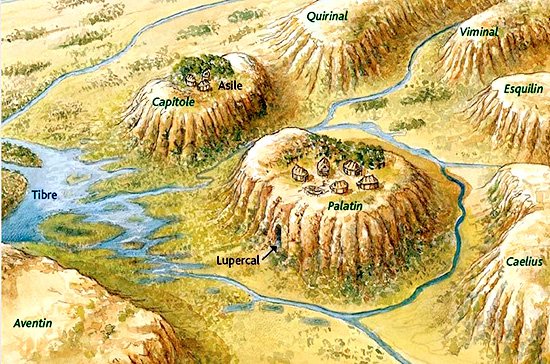
508-44 BC – REPUBLICAN ROME
The Romans drain the valley in early republican times and build houses, public buildings and temples. The area of the ancestral lake becomes the juncture of four regions of ancient Rome.

AD 64 – The great fire under Nero
On July 19, 64 AD a fire starts in the city, quickly spreads and burns for six days. According to Tacitus, upon hearing the news, Nero organizes a relief effort paid from his own funds. After the fire Nero opens his palaces to the homeless and arranges for food to be delivered to the survivors.
In the area cleared by fire Nero builds his new palace, known as the Domus Aurea: a huge space (size debated between 40 and 120 acres) with buildings, parks, fake fishing villages etc. See the whole story in this brief documentary about Nero’s palace. At the bottom of the valley Nero has a great rectangular pond built, surrounded by a portico.
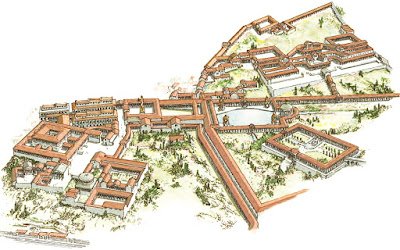
AD 71-72 Start of construction
After the death of Nero and one year of turmoil, the new emperor Vespasian gives back to the Romans much of Nero’s Domus Aurea, and starts the construction of a public building – an amphitheatre – right in the spot of Nero’s lake, at the bottom of the valley.

AD 80 – Titus Inaugurates the amphitheatre
Vespasian dies in 79, and cannot see the inauguration of the amphitheatre by his son Titus
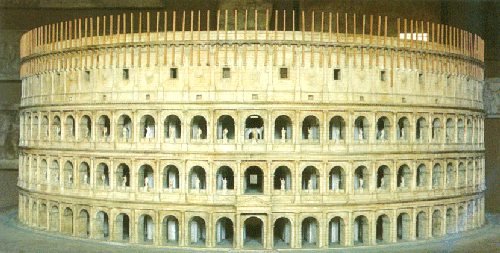
80-81 – Excavation of the hypogea
Domitian, Titus’ brother, completes the building by excavating the hypogeum under the arena, a series of underground spaces used to prepare the shows of the amphitheatre.
2nd century – First reconstruction by emperor Antoninus Pius
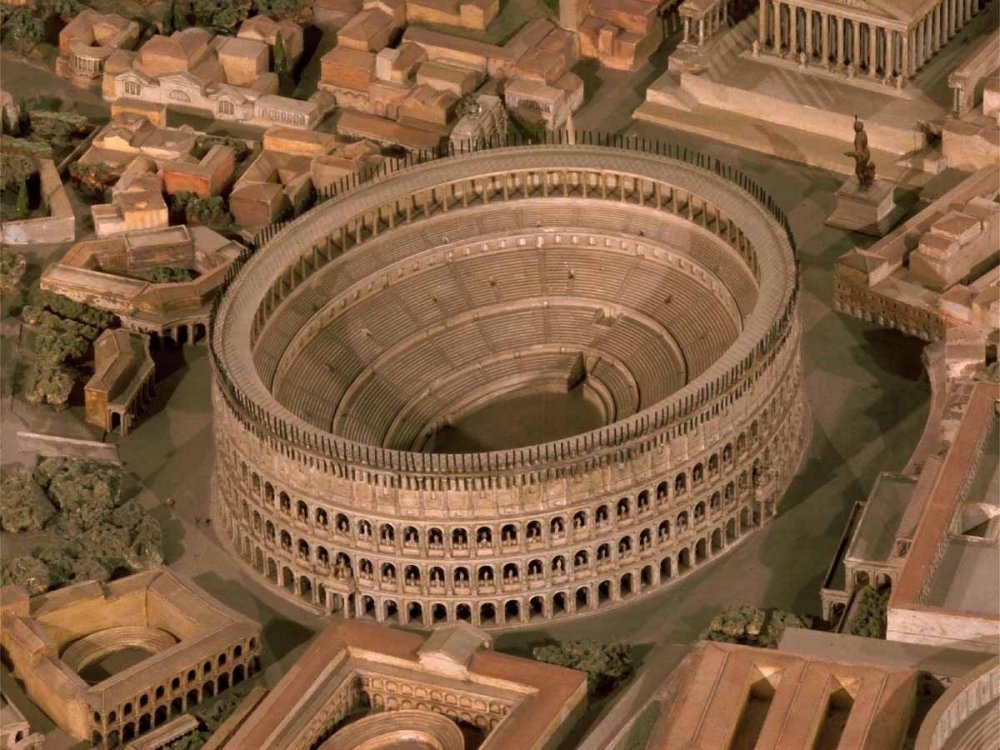
The first repairs are carried out by Antoninus Pius (86-161) after a fire that destroyed 350 houses in the city.
217 – Struck by lightning

On the day of the Vulcanalia, August 2, another fire devastates most of the amphitheatre and of the surrounding area. The amphitheatre burns for days. The repairs by emperor Macrinus are extensive: practically the building is reconstructed, as only the skeleton of the former Flavian structure is left.
It took more than thirty years to rebuild the Roman amphitheatre. Emperor Marcus Aurelius Antoninus Augustus, also known as Heliogabalus or Elagabalus (203 – 222) started the works. The building – still unfinished – was reopened and dedicated to the gods in 222 under Alexander Severus, who ordered that the taxes paid by pimps, prostitutes and homosexuals would be destined to the repair of public buildings, among which the amphitheatre.
240 – A COIN BY GORDIAN III SHOWS THE RESTORED COLOSSEUM
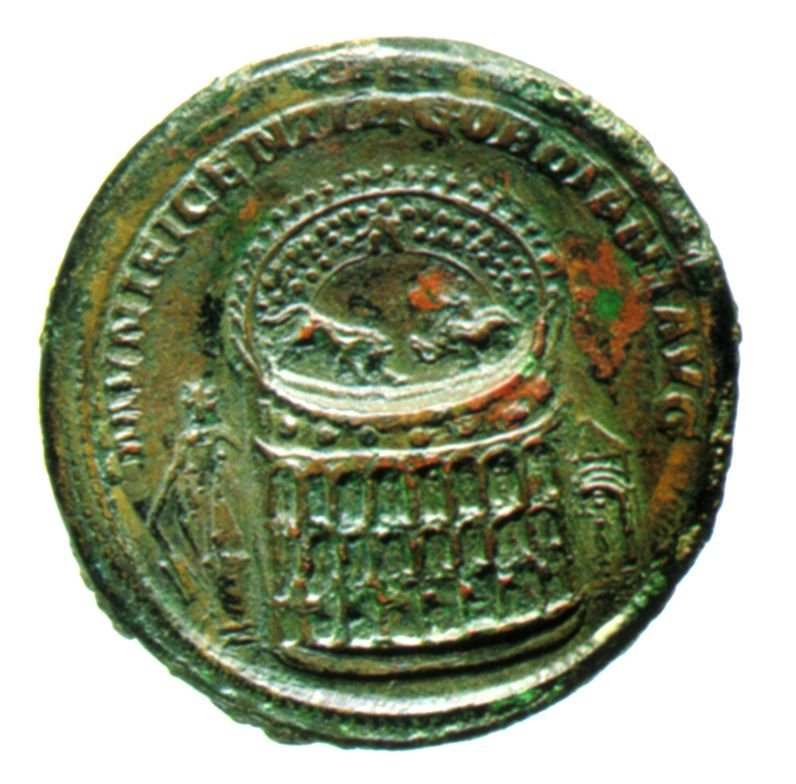
After 20 more years the repairs are actually finished under the reign of Gordian III. Another coin commemorates the event. We see the Colosseum, the Meta Sudans on the left, a building on the right, a lion and a bull fighting in the arena, the spectators and the emperor in his box.
250 – LIGHTNING STRIKES AGAIN, REPAIRS BY DECIUS
According to some sources the Colosseum was again struck by a lightning and damaged during the reign of Decius

262 – A TREMENDOUS EARTHQUAKE HITS THE EASTERN EMPIRE AND ROME

African and Eastern provinces are devastated by a catastrophic earthquake; the following year an epidemic of plague spreads in Rome
404 – Last gladiatorial combat in the Colosseum
Emperor Theodosius established Christian orthodoxy, bans paganism and starts persecuting the old faith. Pagan holidays and customs are abolished

410 – THE VISIGOTHS SACK ROME – THE AMPHITHEATRE IS USED AS A CEMETERY
During the Visigoth war the amphitheatre was abandoned and its surroundings became a burial site, as the sieges did not allow to bury the dead outside the walls. After the war these little cemeteries were “reclaimed” by burying them under 2 metres of earth. One of them was rediscovered only in 1895.

V century – THE SPOLIATION OF THE COLOSSEUM BEGINS
From the early V century the Romans started to recycle the materials of the damaged amphitheatre: travertine, marble slabs, tuff blocks, the lead of the piping etc. This spoliation started during the reign of king Theodoric the Great (454 – 526) and it was systematic: unused or damaged parts of the building were dismantled and reused.

429 – REPAIRS AFTER THE VISIGOTH SACK

Under co-rulers Honorius and Theodosius II (the one portrayed in the coin) Praefectus Urbi Iunius Valerius Bellicius pays the cost of the restoration works
429 – ABOMINANDUS EARTHQUAKE!
Under Theodosius and Valentinian III (see his coin) another earthquake hits Rome
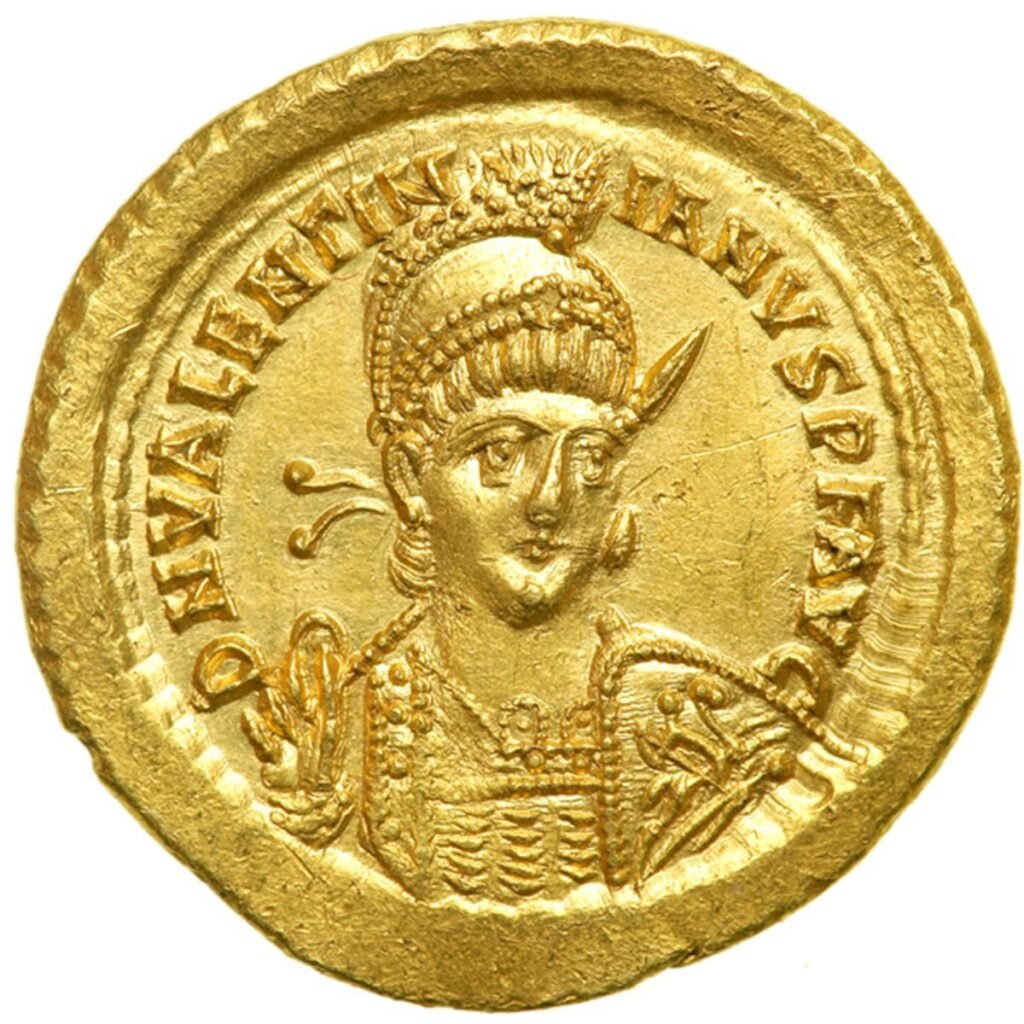
443 – REPAIRS AGAIN
After a disastrous earthquake Praefectus Urbi Rufius Cecina Felix Lampadius has restoration works done on the arena, on the podium and on the terraces, at his own expense! Read the interesting story of the Lampadius inscription (photo by Giovanni Lattanzi)

455 – THE VANDALS SACK ROME
The city is again sacked, this time for fifteen days, by the Vandals of Genseric
470 – RESTORATION WORKS BY MESSIUS PHOEBUS SEVERUS
This inscription commemorates these works, but we have no other information about it

484 – 508? – MORE RESTORATION WORKS
The last restoration works recorded, paid for by Praefectus Urbi Decius Marius Venantius Basilius. The date is uncertain. On this occasion a road was created crossing the amphitheatre, after having filled up the arena

523 – LAST VENATIO
The last staged hunt is performed in the amphitheatre

VI – IX CENTURY – CENTURIES OF NEGLECT
The valley starts filling up with earth; a road is built through the arena and the pillaging of material starts. The Colosseum is now property of the church of Santa Maria Nova.
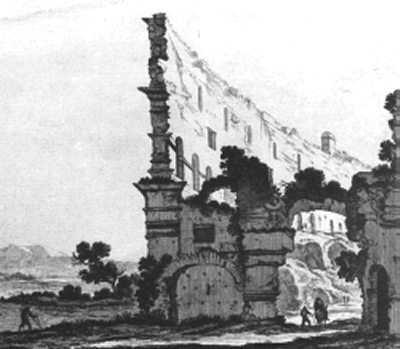
IX – XIII CENTURY – GREAT DEVELOPMENT OF COLOSSEUM RESIDENCES
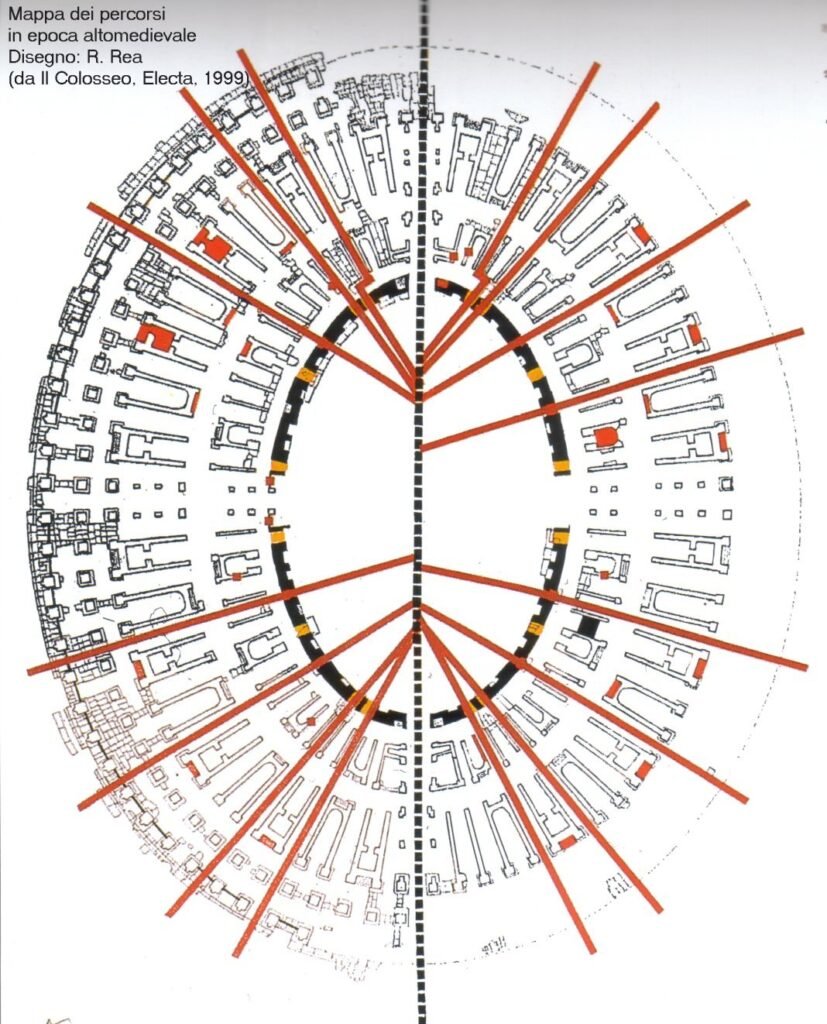
A map of the medieval paths through the amphitheatre. The priests of S. Maria Nova sell and rent houses and spaces in the monument, now called Amphitheatrum Colisei. A continuous row of houses is built against the N facade.
1084 – THE FRANGIPANE OCCUPY THE COLOSSEUM
The Normans of Robert Guiscard sack Rome. The city falls into the hands of families in constant war. One of these families, the Frangipane, makes his residence in the Colosseum.
1349 – EARTHQUAKE – THE BIG ONE
Poet Francesco Petrarca witnesses the extensive damage to the city
1309 – 1377 – AVIGNON PAPACY
The Pope moves to Avignon and the economy of the city dwindles. Population is reduced to 17.000
1382 – A RELIGIOUS BROTHERHOOD OBTAINS THE PROPERTY OF THE COLOSSEUM (AND OF ITS MATERIALS)
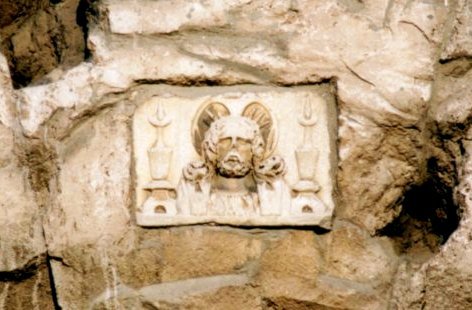
The Arciconfraternita del SS. Salvatore ad Sancta Sanctorum gets one third of the Colosseum (the rest is of the Church and of the Roman Senate). Their sign (above) is still affixed on the Colosseum. The Arciconfraternita also gets the concession to sell the materials. The Colosseum is practically privatized.
XV – XVIII – THE LOOTING WORSENS
For centuries thousands of cartloads of stones are taken away from the amphitheatre to build palaces and churches
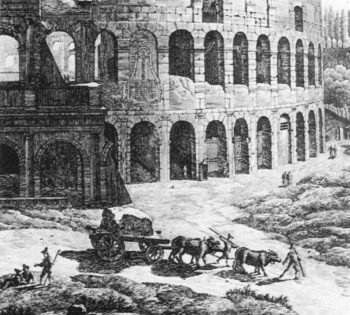
1750 – POPE BENEDICT PROTECTS THE COLOSSEUM – RESTORATION STARTS
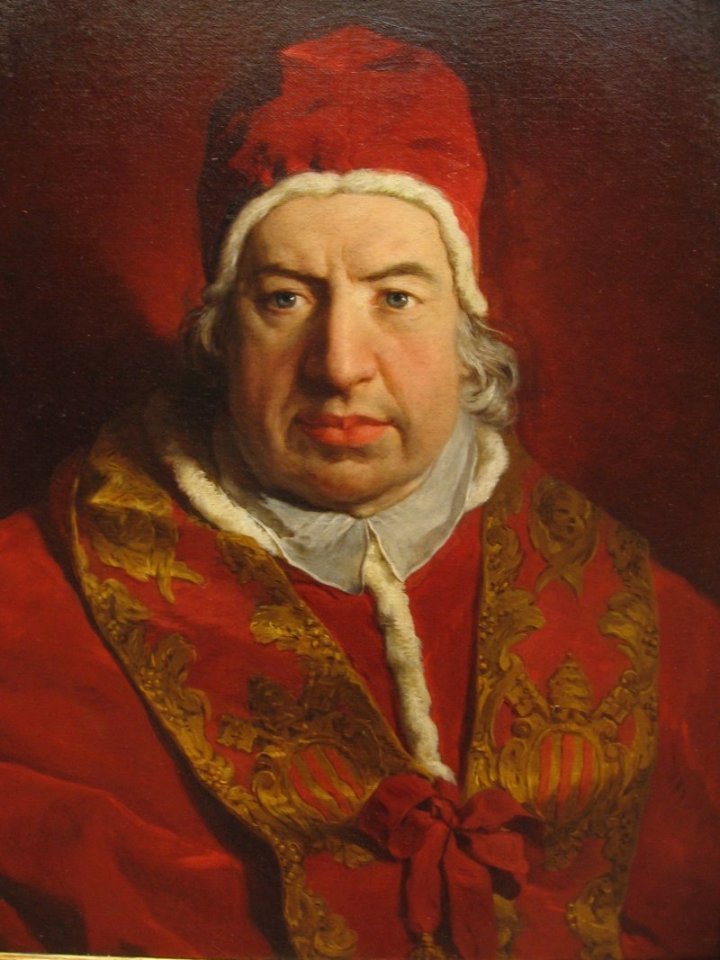
1752 – VIA CRUCIS AT THE COLOSSEUM
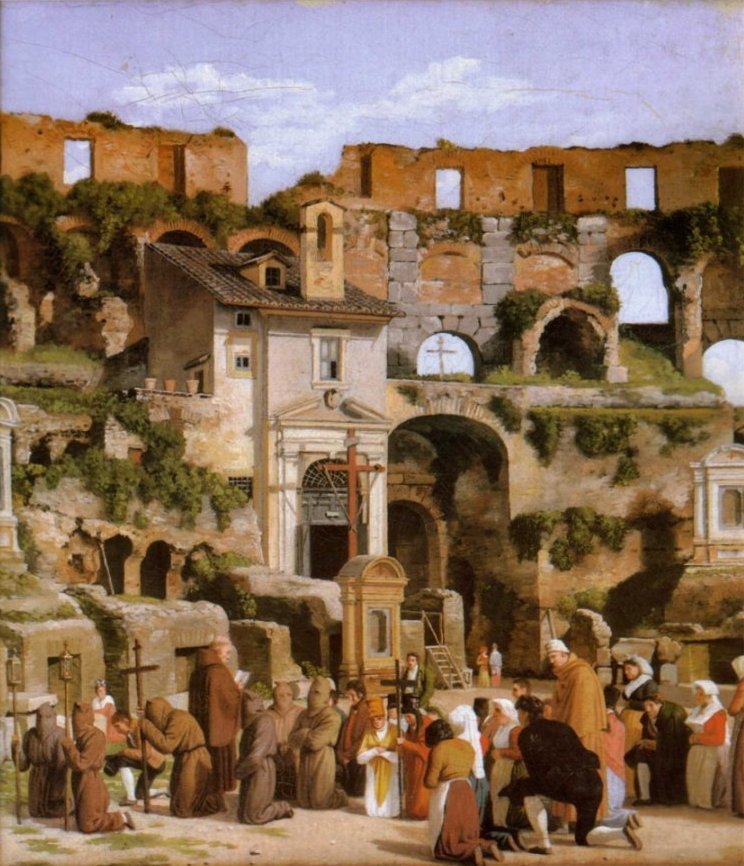
1798 – THE FRENCH OCCUPY ROME AND DECLARE THE REPUBLIC
According to a project by the French occupants the Colosseum Is to become part of a huge archaeological park including the whole centre of Rome.
1800 – 1853 – WORKS ON THE AMPHITHEATRE
In these years are built the two abutments of bricks to reinforce the sides of the facade: in 1820 the “Stern” abutment on the NW side and in 1826 the other, more photographed one. In 1828 Antonio Nibby manages to empty all the surface drains, and in 1830 Luis Joseph Duc makes a first complete survey of the monument with modern means. More arches are reconstructed, and tie rods are installed to secure the facade

1870 – THE NEW ITALIAN STATE IS BORN – ROME ITS CAPITAL CITY
In 1874 the works to finally free the arena and reach its bottom start again. In the arena are found capitols, pieces of columns, inscriptions and debris. The stations of the cross in the arena are finally removed, notwithstanding the fierce opposition of the Catholic Church. Works to install drains and gas pipes lead to more discoveries: the paved area around the amphitheatre on the N side, the boundary stones and a road.
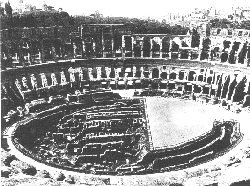
1930 – BACKDROP FOR PARADES
Mussolini uses the Colosseum to hold fascist rallies. The area is deeply transformed by the cutting of the Velia and the opening of Via dell’Impero
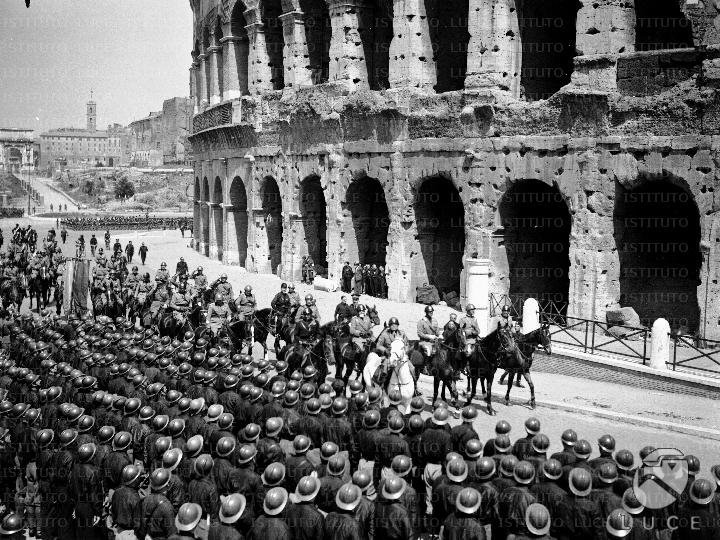
1940 – THE METRO WORKS CUT THE FOUNDATIONS

The metro line passes between the Colosseum and the arch of Constantine
1953 – THE COLOSSEUM STARS IN “ROMAN HOLYDAYS”
In the 1953 romantic comedy by William Wyler, Gregory Peck and Audrey Hepburn tour the monuments of Rome on a Vespa
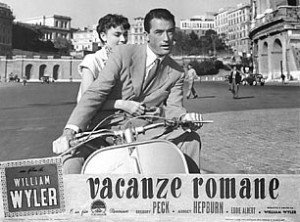
1972 – BRUCE LEE FIGHTS IN THE COLOSSEUM
In the martial arts action comedy “The Way of the Dragon”, a.k.a. “The Return of the Dragon”, Bruce Lee travels from Hong Kong to Rome and defies his enemy, a young Chuck Norris, in the Colosseum

EVERYDAY – THOUSANDS OF TOURISTS VISIT THE COLOSSEUM
The Colosseum is the most visited monument in Italy. Click here for tips on a visit. See the latest news on the restoration of the monument here

